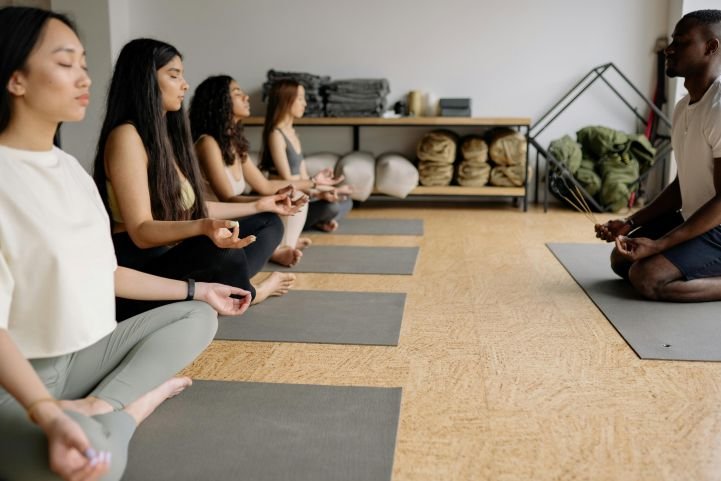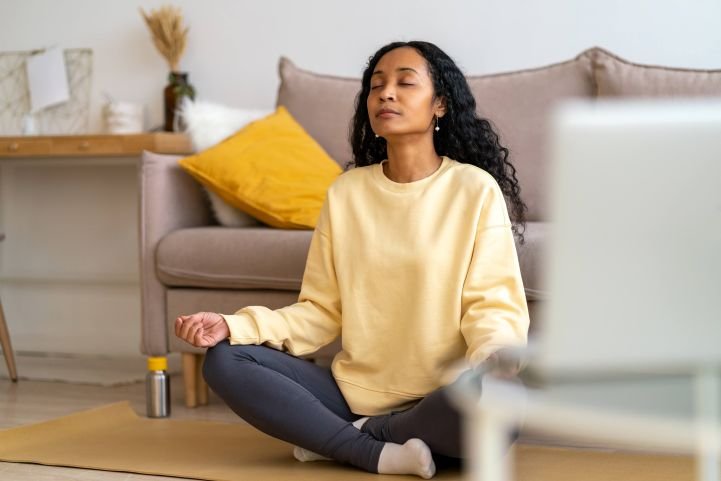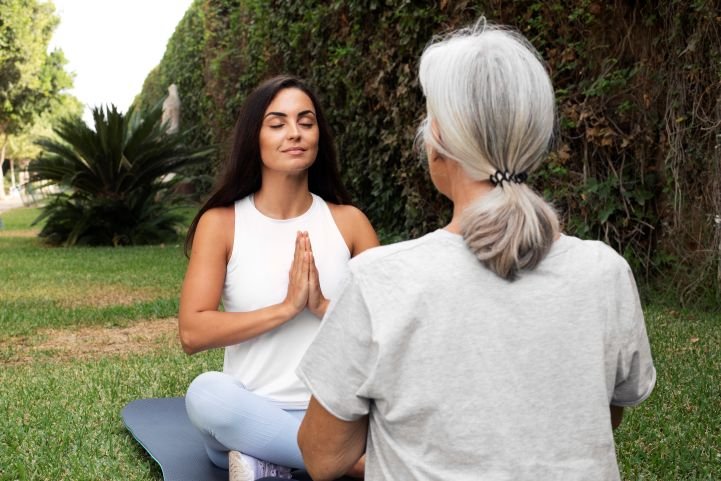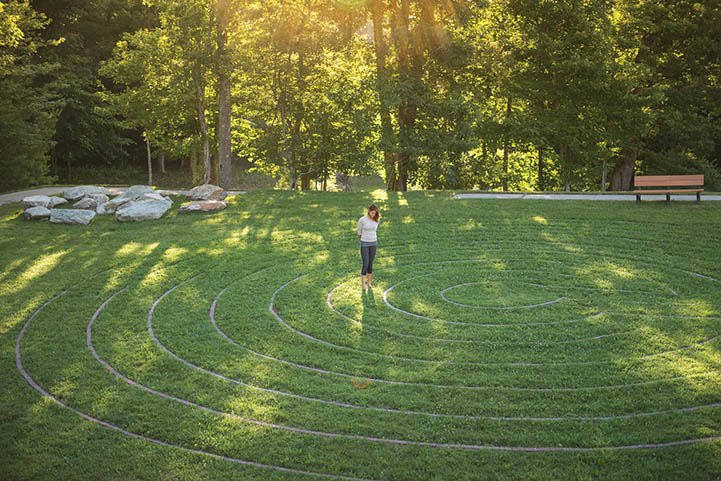
Meditation
Find balance in the age of noise with a silent retreat—cultivate mindfulness, self-love, and spiritual growth. Read to learn how and where to do them.
In our modern age, silence is becoming increasingly rare. From the moment we wake up, our lives are filled with noise—smartphone notifications, 24-hour news cycles, social media chatter, podcasts, and the constant hum of urban life. This nonstop stimulation can be overwhelming, leaving many of us anxious, distracted, and longing for peace.
A silent retreat offers a radical alternative: a deliberate pause from external noise and internal chatter. It is a space where participants step away from their daily routines, enter into silence, and dedicate themselves to meditation and mindful living. Unlike traditional vacations that focus on entertainment and external activities, silent meditation retreats focus inward. They provide a container for deep rest, self-reflection, and spiritual renewal.
At their core, silent retreats are about connection—reconnecting with oneself, with the present moment, and often with a larger sense of meaning or spirituality. They foster self-realization, inner peace, and clarity in a way that few other experiences can.

Silent meditation is the cornerstone of most retreats. It is a simple practice, but its effects are profound.
At first glance, silent meditation may seem like simply sitting in a quiet space and not speaking. But in truth, it is far more profound. Silent meditation is not about suppressing thoughts or struggling to create a perfectly blank mind. Instead, it is about gently withdrawing attention from the constant chatter of the mind and resting in the deeper silence within.
When we practice silent meditation, we begin to see how much of our energy is spent on the endless cycle of thoughts, judgments, and distractions. In silence, this mental noise gradually settles, allowing us to touch a deeper dimension of stillness and awareness. This inner silence is not empty—it is vibrant, alive, and full of peace.
From a psychological perspective, silent meditation reduces stress and activates the parasympathetic nervous system, which restores balance to the body and mind. From a spiritual perspective, silence becomes a doorway to self-realization—helping us connect with our true nature, beyond roles, responsibilities, and mental stories.
The Art of Living Foundation offers a unique understanding of silent meditation, viewing it not only as a technique but as a journey into the heart of existence. According to Gurudev Sri Sri Ravi Shankar, the founder of Art of Living:
“Silence is the mother of creativity. It is the source of healing and joy.”
From this perspective, silence is not the absence of sound but the presence of consciousness. In the stillness of silent meditation, we experience a state of rest that is deeper than sleep. The mind releases accumulated stress and impressions, and we return to our natural state of clarity, energy, and joy.
Art of Living programs, such as the Art of Living Part 2 Course (Silent Retreat), emphasize the importance of regular silent retreats as a way to deepen one’s spiritual practice. During these retreats, participants combine guided meditations, advanced breathing techniques like SKY Breath Meditation, and periods of deep silence. This unique combination helps individuals move beyond surface-level relaxation into a profound state of inner connection.
Silent meditation, from this perspective, is not a withdrawal from life but a way of fully engaging with it. When we return from silence, we are more centered, compassionate, and capable of responding to life’s challenges with wisdom rather than reactivity.

Scientific research supports what meditators have known for centuries: silence and meditation can transform the mind and body. Benefits include:
Mindfulness meditation is often central to retreats. It teaches participants to observe the present moment with openness and curiosity—whether that’s the sensation of breathing, the sound of birds outside, or the feeling of emotions arising. By practicing mindfulness, individuals learn to let go of distractions and become more fully alive in each moment.
In addition to seated practice, walking meditation is a key element. It blends mindfulness with gentle movement, encouraging participants to be present with each step. Often practiced outdoors, walking meditation deepens one’s connection to nature and integrates meditation into daily activities.
Together, these practices form the heart of the silent retreat experience, teaching that silence is not an absence but a presence—a gateway to peace and wisdom.

Attending a silent meditation retreat is often described as a life-changing experience. Unlike a weekend getaway, where the relaxation fades quickly, the benefits of retreat can last for months or even years.

Most silent retreat centers are intentionally simple. Rooms are basic but comfortable, meals are wholesome, and the environment is quiet. The simplicity reduces distractions and supports inner focus.
A typical day might include:
Often, vegetarian meals are served, not only for health reasons but also to encourage compassion and sustainability. Additionally, eating vegetarian food makes for faster digestion and less falling asleep in meditation. Eating in silence becomes a meditation itself—an invitation to taste food fully and appreciate nourishment.
Though silence is observed, retreats create a strong sense of community. There is comfort in practicing alongside others who share the same intention. The collective energy helps sustain participants through challenging moments.
Guidance from experienced teachers ensures that the environment is safe and supportive. After the retreat, many centers offer alumni groups or online sanghas (communities) where participants can stay connected and continue their practice.

Before attending, it’s helpful to reflect on what you hope to gain. Whether it’s stress relief, self-discovery, or spiritual growth, having a clear intention creates direction and motivation.
Most retreats require participants to turn in phones, books, and even journals. Preparing for this disconnection—perhaps by gradually reducing screen time before the retreat—can make the transition easier.
A silent retreat can bring unexpected emotions to the surface. Entering with an open mind and willingness to face whatever arises allows for deeper growth.
By preparing both mentally and practically, participants set themselves up for a transformative experience.

There are many silent retreat centers around the world, each with unique offerings.
Vipassana retreats: Based on the teachings of the Buddha, these 10-day retreats emphasize mindfulness of breathing and body sensations. They are intensive and highly structured.
Yoga and meditation retreats: Combining yoga with meditation, these retreats emphasize the harmony of body and mind.
Contemplative Christian retreats: Some monasteries and retreat houses offer silence framed within Christian contemplative traditions.
Wellness retreats: Often, these types of retreats integrate silence with practices such as journaling, energy healing, or nature immersion.
Art of Living silent retreats: A fully curated program, in-person or online, includes yoga, special guided meditations, evening wisdom sessions, and more. Typically, these retreats are offered over a long weekend with longer programs several times a year.
Choosing the right retreat depends on personal goals. Those seeking discipline may prefer Vipassana, while others may benefit from a gentler introduction through yoga or mindfulness retreats.

Not everyone can attend in person, but online retreats and digital resources make silence accessible from the comfort of your home.
Using these tools helps sustain practice long after leaving retreat—or serves as a starting point before attending in person.

The true measure of a silent meditation retreat is not just the peace experienced during the retreat itself, but how that peace flows into daily living. Many participants describe the retreat as a reset—an opportunity to clear away mental clutter and reconnect with their center. But once the retreat ends, emails, traffic, deadlines, and family responsibilities return. The challenge is: how do we carry the stillness of silence into everyday life?
The Art of Living Foundation emphasizes that silence is not meant to be left behind at the retreat—it can be woven into everyday life through consistent practice. One of the most effective ways to integrate silence is through the breath.
As Gurudev often says, “Silence is the language of the heart.” By nurturing silence daily, we connect more deeply with ourselves and others, leading to greater compassion, clarity, and joy.
Integration is not about recreating the retreat environment; it’s about embodying its essence. After the retreat, many participants find themselves more patient with their families, more creative at work, and more resilient in the face of challenges.
Silence becomes less about external quiet and more about an inner state of being—a way of living with awareness, gratitude, and presence.
Joining local meditation groups or staying in touch with retreat peers provides ongoing accountability.
Integration is not about replicating the retreat but embodying its lessons—living with more patience, compassion, and presence in ordinary moments.

In an era defined by overstimulation and distraction, a silent meditation retreat is more than a luxury—it is a necessity for mental, emotional, and spiritual well-being.
By offering silence, structure, and community, retreats allow individuals to rest deeply, discover clarity, and reconnect with themselves. The benefits—reduced stress, emotional healing, greater focus, and spiritual growth—are lasting and transformative.
Silent retreats remind us that silence is not empty. It is full of presence, wisdom, and peace.

As you return from a silent retreat, the key is to continue practicing—to breathe mindfully, to sit in meditation, and to embrace moments of stillness in daily life. These practices transform not only how we relate to ourselves but also how we show up in the world—with more compassion, wisdom, and joy.
The gift of silence is always available. A retreat simply teaches us how to find it—and how to carry it with us wherever we go. To learn more about silent retreats, click here.

If the idea of stillness and inner renewal resonates with you, a silent meditation retreat may be the perfect next step. The Art of Living Part 2 Course offers a unique opportunity to experience deep rest, advanced guided meditations, powerful breathing practices such as SKY Breath Meditation, and the profound joy of inner silence—all within a supportive and nurturing environment.
Participants often describe the Silent Retreat as life-changing—a chance to reset the mind, release deep stress, and reconnect with their true selves. Whether you are new to meditation or a seasoned practitioner, this program provides tools and insights to carry silence into everyday life.
👉 Discover the Art of Living Silent Retreat (Part 2 Course) and gift yourself the experience of profound stillness, clarity, and inner peace.
Learn more about the Art of Living Part 2 Course → HERE












